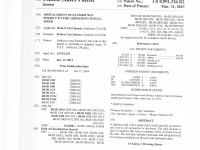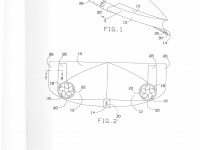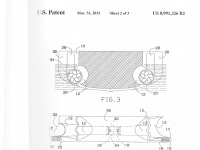US Patent # 8,881,326, granted 3/31/2015
Hull speed is a fundamental limitation of conventional displacement mode hull forms which occurs due to the coupling of the bow wave with the vessel's waterline length. With the exception of long, narrow and light hull forms, which are commercially impractical, displacement hulls which are driven past hull speed suffer the separation of the wave form created by the bow wave at the stern, resulting in a gradual lowering of the stern and therefore also the raising of the bow, and the onset of planing.
Planing hulls are normally economically impractical because the power/speed curve is cubic.
My insight was to view the hull, propulsion system and buoyant fluid as an integrated system, rather than separate elements, and recognize that a conventionally configured and powered displacement hull form is dynamically open and dissipative.
I then asked the question: what sort of solution would result if I tried to design an (asymptotically) closed system.
The result is US Patent # 8,991,326.
The scale prototype is now in the testing stages.
Performance improvements are predicted across the full range of system dynamics, including substantially reduced fuel efficiency, improved maneuverability, improved structural integrity, and a significantly expanded design envelope.
Like this entry?
-
About the Entrant
- Name:Robert Jansen
- Type of entry:individual
- Software used for this entry:human brain
- Patent status:patented








